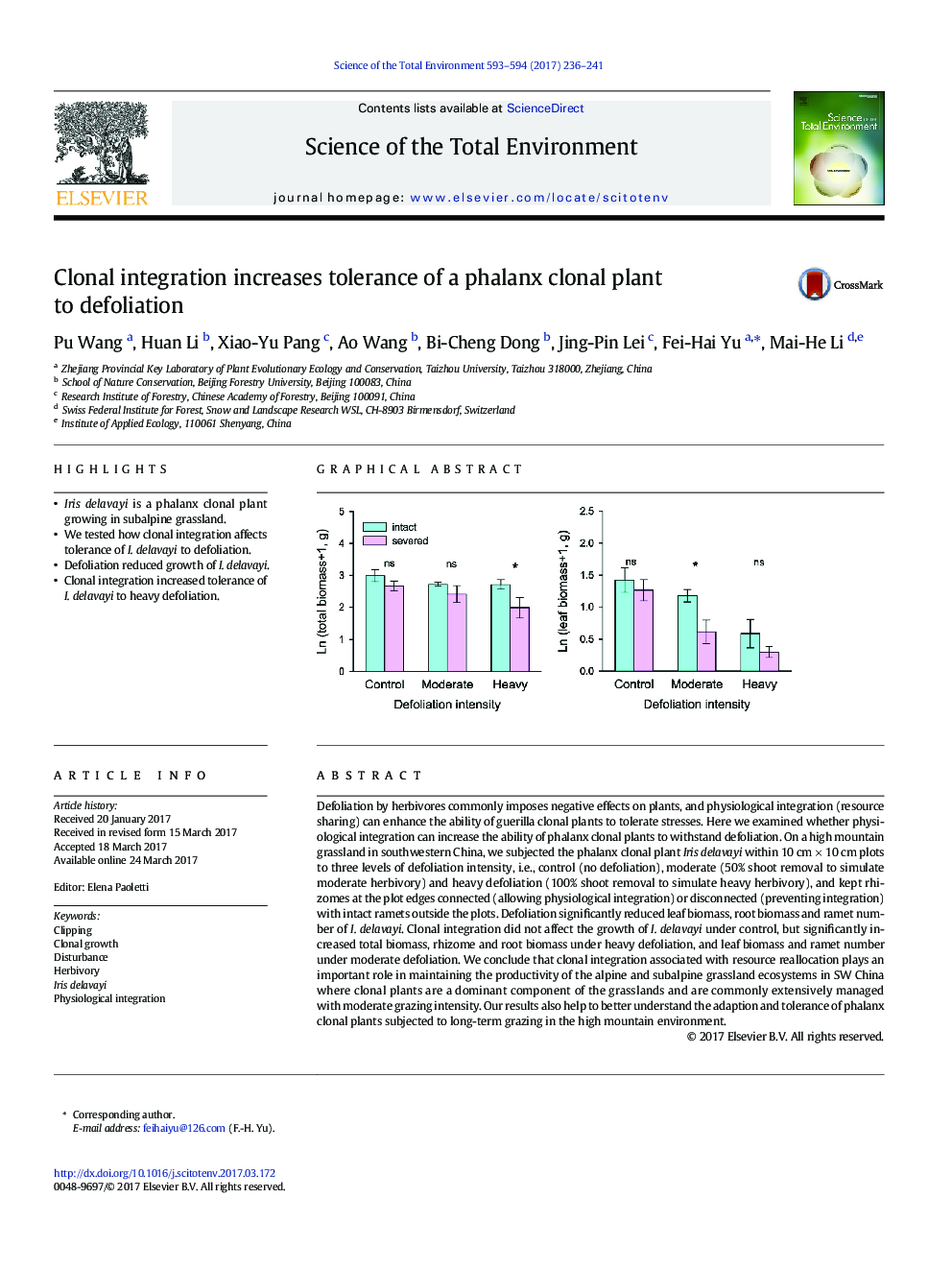| کد مقاله | کد نشریه | سال انتشار | مقاله انگلیسی | نسخه تمام متن |
|---|---|---|---|---|
| 5750851 | 1619702 | 2017 | 6 صفحه PDF | دانلود رایگان |
- Iris delavayi is a phalanx clonal plant growing in subalpine grassland.
- We tested how clonal integration affects tolerance of I. delavayi to defoliation.
- Defoliation reduced growth of I. delavayi.
- Clonal integration increased tolerance of I. delavayi to heavy defoliation.
Defoliation by herbivores commonly imposes negative effects on plants, and physiological integration (resource sharing) can enhance the ability of guerilla clonal plants to tolerate stresses. Here we examined whether physiological integration can increase the ability of phalanx clonal plants to withstand defoliation. On a high mountain grassland in southwestern China, we subjected the phalanx clonal plant Iris delavayi within 10 cm Ã 10 cm plots to three levels of defoliation intensity, i.e., control (no defoliation), moderate (50% shoot removal to simulate moderate herbivory) and heavy defoliation (100% shoot removal to simulate heavy herbivory), and kept rhizomes at the plot edges connected (allowing physiological integration) or disconnected (preventing integration) with intact ramets outside the plots. Defoliation significantly reduced leaf biomass, root biomass and ramet number of I. delavayi. Clonal integration did not affect the growth of I. delavayi under control, but significantly increased total biomass, rhizome and root biomass under heavy defoliation, and leaf biomass and ramet number under moderate defoliation. We conclude that clonal integration associated with resource reallocation plays an important role in maintaining the productivity of the alpine and subalpine grassland ecosystems in SW China where clonal plants are a dominant component of the grasslands and are commonly extensively managed with moderate grazing intensity. Our results also help to better understand the adaption and tolerance of phalanx clonal plants subjected to long-term grazing in the high mountain environment.
158
Journal: Science of The Total Environment - Volumes 593â594, 1 September 2017, Pages 236-241
